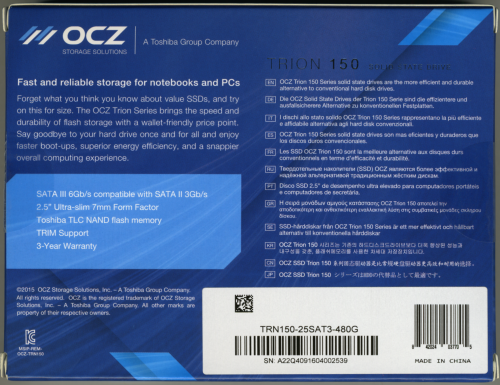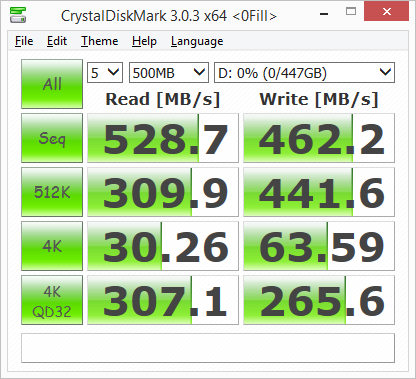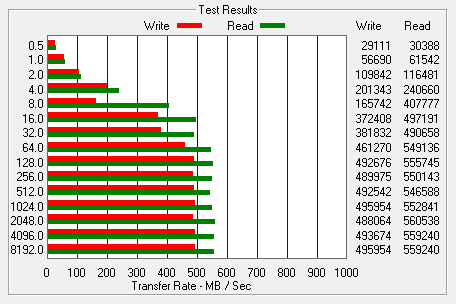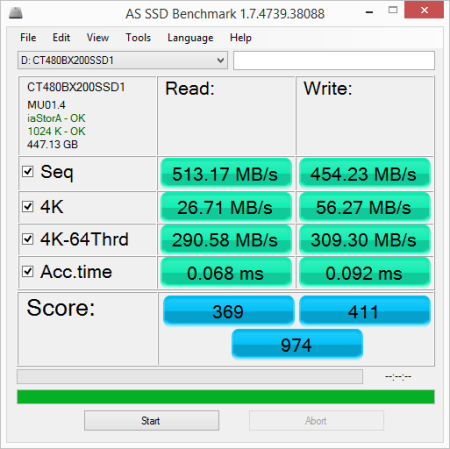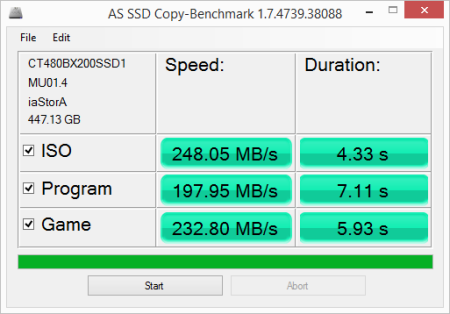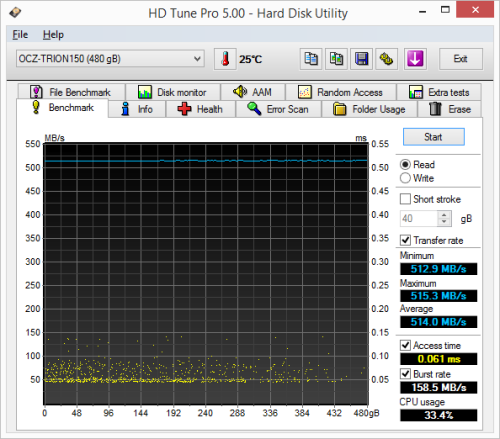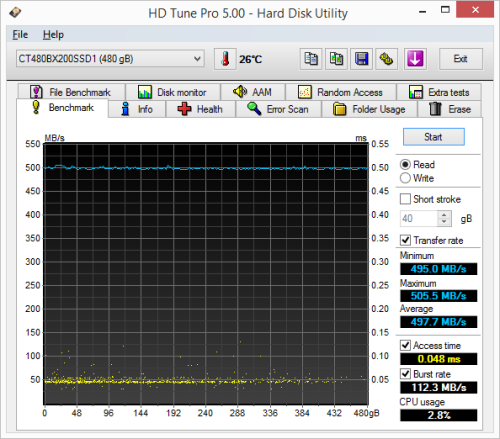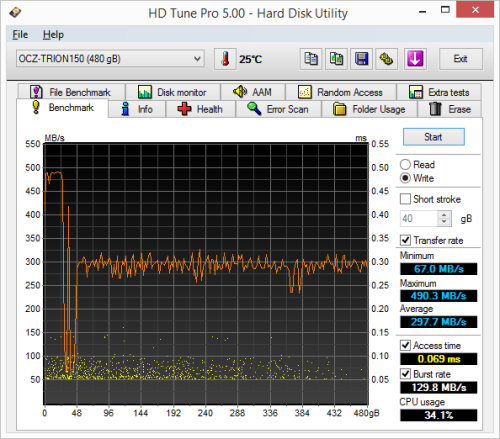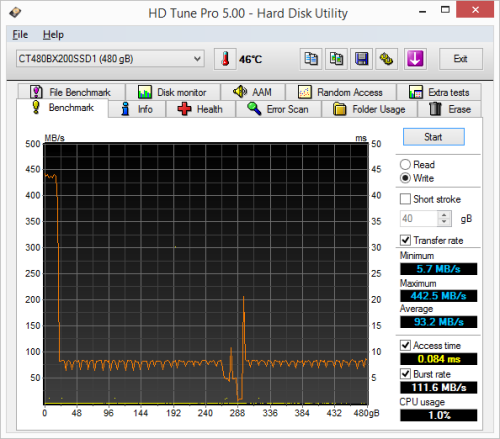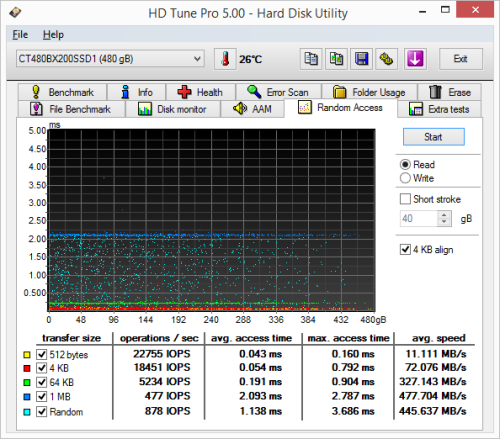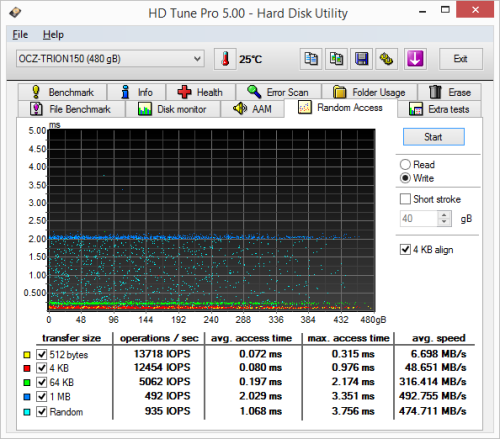

Model: OCZ Trion 150 480GB Solid State Drive
Manufacturer: OCZ Storage Solutions
Provided By: OCZ Storage Solutions
OCZ Storage Solutions is no stranger to the computer industry. Founded by enthusiasts, for enthusiasts, the company entered the memory market in 2002. Determined to manufacture the very best memory for overclockers, OCZ quickly established itself as a leader in the industry by breaking speed barriers and maintaining a reputation of quality. Today, OCZ is fully committed to the solid-state storage market. As a wholly owned subsidiary of Toshiba, the company offers a variety of high-performance SSD solutions for the enterprise and consumer markets.
At this year's Consumer Electronics Show (CES), OCZ unveiled its latest Triple-Level Cell (TLC) NAND-based SSD, the Trion 150. Designed to deliver a superior balance of performance, reliability and value, the Trion 150 is an easy and affordable way for entry-level users to enhance their mobile or desktop systems. Powered by the same Toshiba TC58 controller found in the Trion 100 and available with up to 960GB of the company's new 15nm TLC NAND flash, the drive is capable of 550MB/s read and 530MB/s write speeds for faster boot ups, file transfers, and system responsiveness. The Trion 150 is also optimized for lower energy consumption which translates into longer battery life to keep you up and running longer.
The Trion 150 is available in 120GB, 240GB, 480GB and 960TB capacities. For this review, OCZ sent us the 480GB version of the drive which is capable of delivering up to 550 MB/s sequential read and 530 MB/s sequential write speeds as well as up to 90,000 random read and 54,000 random write IOPS.
| OCZ Trion 150 480GB Solid State Drive | |||||||||||||||||||||||||||||||||||||||||||||||
General Specifications
Performance
Reliability
Power Consumption
Environmental
Dimensions and Weight
Other Features
|
Needless to say, this is only a taste of what the Trion 150 has to offer. To give you an idea of what to expect, we'll take a closer look at OCZ's new SSD and then see how well it performs. Does the Trion 150 have what it takes? More importantly, is it the best bang for your buck? Keep reading as we find out.
The Trion 150 comes in a small, blue box. While there isn't a lot of information on the front, the back of the box advertises many of the drive's key features including its SATA 6Gbps interface, 2.5" ultra-slim form factor, Toshiba TLC NAND flash memory and 3-year ShieldPlus warranty.

OCZ doesn't include a lot of extras with the Trion 150. Along with the SSD, the box contains a small drive installation manual with instructions for both desktop and notebook computers as well as a sheet of paper with information on how to reach OCZ's tech support.
Physical Features:
The construction of the Trion 150 is very similar to that of the Trion 100. The outer casing is made out of a lightweight metal alloy and is covered by a great looking silver finish. The top of the drive also has a large, white, blue and gray sticker showing that it is part of OCZ's Trion 150 series.


Like the Trion 100, the Trion 150 uses Toshiba's TC58 (TC58NC1000GSB-00) controller chip. Toshiba still hasn't released any information regarding this controller. However, considering its size and the way it is positioned on the PCB, the TC58 has more than a passing resemblance to the Phison PS3110.


For the Trion 150, OCZ opted to use Toshiba's 15nm Triple-Level Cell (TLC) NAND flash modules. Looking at the pictures above, you can see that there are eight 32GB NAND flash packages on either side of the PCB. The drive also has a single 512MB Micron DDR3L SDRAM memory chip that is used for caching and garbage collection.
The test system used in this review was an HP 8200 Elite. The computer came equipped with an Intel Core i5-2400 CPU, 4GB of DDR3 1333MHz memory, Seagate Barracuda 7200.12 ST3250312AS 250GB SATA 6 Gb/s hard drive, NVIDIA Quadro FX580 512MB PCIe graphics card and an Intel 82579-LM gigabit network card. For the operating system, I installed a fresh copy of Windows 8.1 Enterprise.
To test the performance of OCZ's Trion 150 SSD, I ran a series of benchmarks using CrystalDiskMark 3.0.3, HD Tach RW 3.0.4.0, ATTO Disk Benchmark 2.46, AS SSD, HD Tune Pro 5.00, Anvil's Storage Utilities, Iometer and PCMark 8. For comparison, I've also included test results from the PNY's CS2211, Plextor M6V, Crucial BX200, OCZ Trion 100, Kingston HyperX Savage, Crucial MX200, OCZ Vector 180, Kingston BX100, Samsung 850 EVO M.2, Samsung 850 EVO mSATA, AMD Radeon R7, Silicon Power Slim S80, Samsung SSD 850 EVO, OCZ ARC 100, SanDisk Ultra II, Kingston MX100, SanDisk Extreme Pro, Samsung SSD 850 PRO, Plextor PX-256M6S and Toshiba Q Series Pro.

Like OCZ's Trion 100 SSD, the Trion 150 is based on Toshiba's TC58 controller chip. Looking at the screenshot above, you can see that it performs equally well with both incompressible (0%) and compressible (100%) data.
CrystalDiskMark 3.0.3:
First, I ran a few quick tests using CrystalDiskMark. This benchmark tool measures the performance of a storage device by testing its sequential read and write speeds as well as its random read and write speeds using blocks 512K and 4K in size.
According to OCZ, the 480GB Trion 150 is capable of reading at 550 MB/s and writing at 530 MB/s when connected to a SATA 6 Gb/s port. Looking at the screenshot above, you can see that the drive had no problems reaching these speeds in CrystalDiskMark's sequential read and write tests.
The Trion 150 performed equally well when using highly compressible 0x00 (0 Fill) data. This time around, the drive was able to read at 565.8 MB/s and write at 539.2 MB/s.
HD Tach RW 3.0.4.0:
Next, I used HD Tach to test the Trion 150's read, write and burst speeds as well as its seek times and CPU usage.

Looking at the screenshot above, you can see that the Trion 150 had average read and write speeds of 365.8 MB/s and 298.2 MB/s respectively, as well as a burst speed of 391.6 MB/s.
Take note that while the Trion 150 uses some sort of SLC caching, the drop in performance isn't nearly as dramatic as what we've seen with other TLC-based drives. This is primarily due to the improvements OCZ made to the drive's firmware. Among other things, the company implemented direct-to-die writes, which lets the drive bypass the SLC cache when it's full and write directly to the TLC NAND flash.
ATTO Disk Benchmark 2.46:
I also used ATTO Disk Benchmark to test the Trion 150's sequential read and write speeds. The tests are run using blocks ranging in size from 0.5KB to 8192KB and the total length set to 256MB.
When tested with ATTO, the Trion 150's read speeds topped out at about 564 MB/s and its write speeds at 538 MB/s.
AS SSD:
AS SSD is a relatively new benchmark designed specifically for solid state drives. The application contains five synthetic tests used to determine the sequential and random read and write performance of a drive.
AS SSD also includes a copy benchmark. This test copies an ISO (two large files), program (many small files) and game (small and large files), returning the speed and duration of each.
HD Tune Pro 5.00:
Next, I ran a series of tests using HD Tune Pro. This hard disk utility measures a drive's performance by testing its sequential read and write speeds as well as its access time, burst rate and CPU usage. For this review, I'm also going to use it to benchmark the Trion 150's random read and write speeds, random access times and the number of operations per second.
The Trion 150 performed relatively well when benchmarked with HD Tune. The drive had average read and write speeds of 514.0 MB/s and 297.7 MB/s, respectively, and a burst rate of 158.5 MB/s when reading.
When writing 4KB blocks, the Trion 150 reached 12,454 IOPS and had an average speed of 48.651 MB/s. The drive was a bit faster when reading, reaching 13,410 IOPS with an average speed of 52.386 MB/s.
Anvil's Storage Utilities:
Anvil's Storage Utilities is another new benchmark designed with SSDs in mind. The standard storage benchmark measures a drive's performance by testing its transfer speeds, access times and IOPS.

Iometer:
Lastly, I ran a series of tests using Iometer. This tool can be configured to benchmark a number of things. In this case, I used it to measure the M6V's read and write speeds and the number of operations per second. The tests were run using random bytes and a queue depth of 3.

The Trion 150's performance was hit and miss when tested with Iometer. While the drive was able to read at an impressive 539.74 MB/s, its sequential write speed averaged out at only 223.88 MB/s.

The Trion 150's wasn't one of the faster drives we've tested when it came to random reads and writes. In our tests, the drive was able to read at 125.88 MB/s and write at 153.21 MB/s.

According to OCZ, the 480GB Trion 150 is capable of 90,000 IOPS when reading and 54,000 IOPS when writing 4K blocks. In our tests, the drive reached 32,225 random read IOPS and 39,221 random write IOPS. As with most drives, the Trion 150 performed better at higher queue depths. With the queue depth set to 32, it reached 79,152 random read IOPS and 75,080 random write IOPS.
Vantage PCMark 8 - Storage Test:
PCMark 8 is a complete benchmark for Windows. It includes five benchmark tests, each designed around a specific scenario. The storage benchmark measures drive performance using real-world traces recorded from Adobe Creative Suite, Microsoft Office and a selection of popular games.
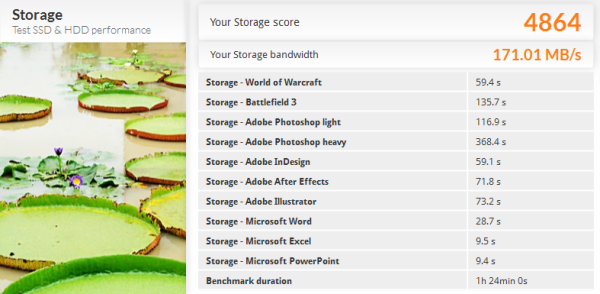
PCMark 8 also includes a consistency test which measures the performance consistency and degradation tendency of a storage system. The test reports the performance level at the start, the degraded steady-state and the recovered state as well as the number of iterations required to reach them. For this test, we are focusing on the Adobe Photoshop (Heavy) trace and will look at both the bandwidth and latency of the drive


When it comes to consistency, TLC-based SSDs typically come up a bit short. As you can see, that wasn't the case with the Trion 150. While the drive's bandwidth dropped below 200 MB/s during the degradation phase, its performance began to recover before it even reached the steady state phases. The Trion 150's latency scores were also quite good. In fact, it performed better than many of the higher priced drives we've tested, including OCZ's own Vector 180.
TRIM Performance:
While SSD's offer many benefits, there are some downsides to using flash memory. One of the biggest issues people run into is performance degradation. Over time, an SSD will run out of fresh blocks and will have to write over data the file system has marked as deleted. This procedure is very complicated and can slow an SSD's write speeds considerably.
To fix this problem, most manufacturers have added TRIM support to their SSDs. The TRIM command allows an operating system, such as Windows 7, to tell an SSD which data blocks are no longer in use. Using this information, the drive pro-actively erases these blocks and adds them to the free block pool.

To test the Trion 150's TRIM and garbage collection functions, I first put the drive in a "dirty" state. I used Iometer to fill the entire drive and then ran a random write test for 30 minutes. Looking at the screenshot below, you can see that the Trion 150's average read and write speeds dropped to 165.7 MB/s and 102.4 MB/s, respectively.

OCZ Trion 150 - Dirty
I let the computer sit for about 30 minutes and then reran the test. The drive's average write speed jumped up to 392.1 MB/s. However, its read speed lagged behind, averaging out at only 137.9 MB/s.
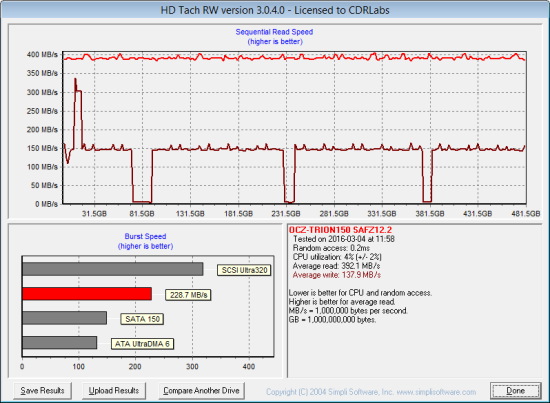
OCZ Trion 150 - After TRIM
Lastly, I used OCZ's SSD Guru software to perform a secure erase on the Trion 150. With the drive wiped clean, it had average read and write speeds of 391.5 MB/s and 287.2 MB/s, respectively.

OCZ Trion 150 - Secure Erased
Final Thoughts:
While not OCZ's fastest or most feature packed SSD, the Trion 150 is an easy and affordable way for consumers to improve the performance of their existing desktop or notebook computer. The Trion 150 combines Toshiba's TC58 controller with their new 15nm TLC NAND to provide a superior computing experience, enabling increased multitasking and productivity over traditional hard drives. In our sequential read and write tests, the 480GB version of the drive was able to read at speeds as high as 565 MB/s and write at speeds in excess of 538 MB/s. It also had no problems holding its own when doing random reads, but lagged behind other drives in our random write tests, producing a little more than 39,000 IOPS at low queue depths.
Like most TLC-based SSDs, the Trion 150 does have its limitations. To compensate for the slow write speeds typically associated with this type of NAND, the drive employs a form of SLC caching. With this cache, the Trion 150 is able to maintain peak performance under normal workloads. However, once a consecutive write operation exceeds the size of the cache, the drive's write speed drops to non-accelerated levels. Thankfully, the Trion 150's performance doesn't drop nearly as much as other TLC-based SSDs. With its ability to bypass the cache and write directly to the TLC NAND, the drive is nearly twice as fast as the Trion 100 when doing sustained sequential writes.
The Trion 150 is available now in 120GB, 240GB, 480GB and 960GB capacities. Prices on Amazon currently range from $62 up to $223, with the 480GB version reviewed here going for about $118.
Highs:
- Available in 120GB, 240GB, 480GB and 960GB capacities
- Good sequential read and write speeds under most conditions
- Performs equally well with compressible and incompressible data
- SATA 6Gb/s interface
- Supports TRIM and idle background garbage collection
- Ultra-slim form factor
- Direct-to-die write method doubles sustained sequential write speed
- Works with OCZ's SSD Guru software
- Supports DEVSLP
- Reasonably priced
- 3 year ShieldPlus warranty
Lows:
- Mediocre random write performance
- Write speed drops when SLC cache is full
- Does not support hardware based encryption

